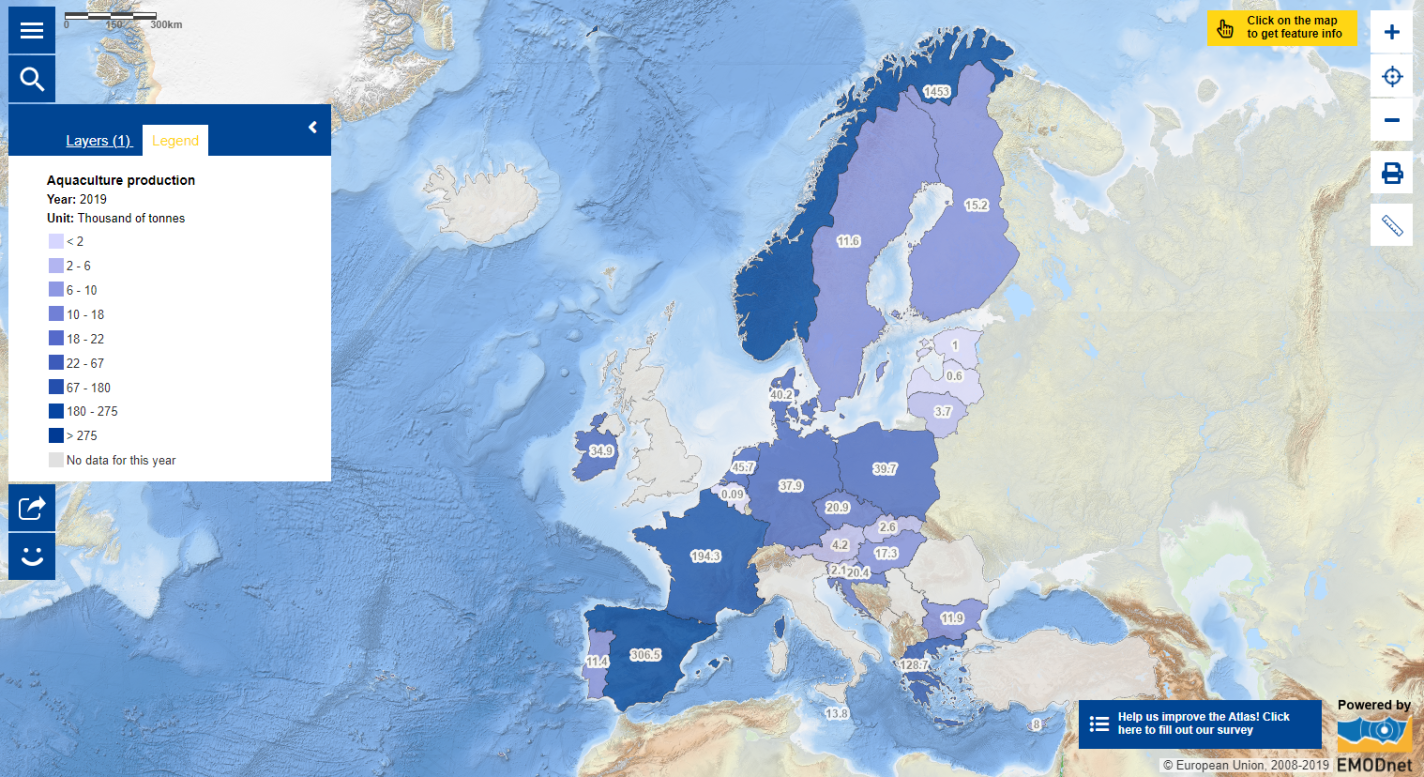Map of the Week – Sustainable Blue Economy and Aquaculture

The 2023 edition of the EU Blue Economy Report has lately been released. The EU Blue Economy encompasses a wide range of economic activities related to the seas and ocean surrounding the European Union. It refers to sectors such as fisheries and aquaculture, coastal tourism, maritime transport, shipbuilding, marine renewable energy and marine biotechnology [1]. The concept of Blue Economy aims to ensure sustainable use of ocean and coastal areas resources while promoting economic growth, social inclusion, and the preservation or improvement of livelihoods [2]. In the EU, a new approach for a sustainable blue economy has already been adopted in 2021 [3]. It is recognised that approximately 20% of the fish and shellfish supply is sourced from EU aquaculture, which employs around 70,000 individuals; whereas the sector comprises roughly 15,000 enterprises, primarily consisting of small businesses or micro-enterprises located in coastal and rural regions [4]. With a vast coastline and numerous outermost regions, the EU has a significant stake in leveraging its marine resources and promoting sustainable development in the sectors involved in blue economy.
The EU ranks as the sixth-largest producer of fishery and aquaculture products globally, accounting for approximately 2% of total global production [1]. Aquaculture production refers to the farming of aquatic (freshwater or saltwater) organisms (e.g. fish, molluscs, crustaceans and plants) for human use or consumption, under controlled conditions. Aquaculture implies some form of intervention in the natural rearing process such as regular stocking, feeding and protection from predators. Aquaculture plays a key role in many emerging economies, by virtue of its potential to increase food production while helping to reduce pressure on fish resources. In this week’s map, you can find the total tonnages of aquaculture production by country from 2008 to 2019. Click on the figures on each country to see the breakdown of annual tonnages.
Do you know that the emerging sector in Blue Economy, in the field of Blue biotechnology, is currently focusing on the algal sector? Algae is described as a ‘novel food’ [5]. It is a highly dynamic sub-sector within the Blue biotechnology sector, which encompasses various economic activities involving the utilization of renewable aquatic biological biomass [1]. Algae holds great promise especially in mitigating environmental challenges associated with traditional agriculture, aquaculture, and fisheries. Explore the EU4Algae platform and the European Algae Biomass Association (EABA ) to gain more insights about algae! Are you feeling inspired? Try out some algae recipes or other sustainable seafood recipes!
The data in this map are provided by eurostat.
- https://op.europa.eu/en/publication-detail/-/publication/9a345396-f9e9-11ed-a05c-01aa75ed71a1
- https://ioc.unesco.org/topics/blue-economy
- https://oceans-and-fisheries.ec.europa.eu/ocean/blue-economy/sustainable-blue-economy_en
- https://oceans-and-fisheries.ec.europa.eu/ocean/blue-economy/aquaculture/overview-eu-aquaculture-fish-farming_en
- https://publications.jrc.ec.europa.eu/repository/handle/JRC125913
